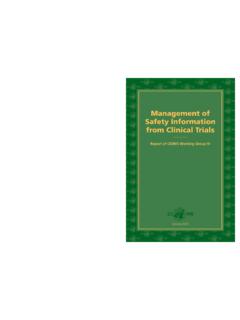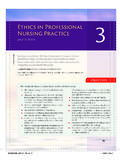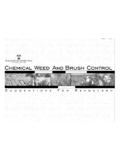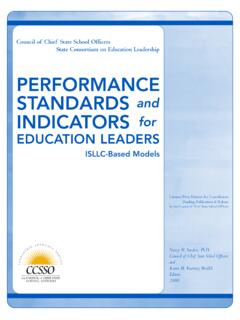Transcription of Annex 5 WHO good distribution practices for …
1 235 World Health OrganizationWHO Technical Report Series, No. 957, 2010 Annex 5 WHO good distribution practices for pharmaceutical products1. Introduction2. Scope of the document3. Glossary4. General principles5. Regulation of the distribution of pharmaceutical products6. Organization and management7. Personnel8. Quality system9. Premises, warehousing and storage10. Vehicles and equipment11. Shipment containers and container labelling12. Dispatch and receipt13. Transportation and products in transit14. Documentation15. Repackaging and relabelling16. Complaints17. Recalls18. Returned products19. Counterfeit pharmaceutical products20. Importation21. Contract activities22. 11:042361. IntroductionDistribution is an important activity in the integrated supply-chain management of pharmaceutical products. Various people and entities are generally responsible for the handling, storage and distribution of such products.
2 In some cases, however, a person or entity is only involved in and responsible for certain elements of the distribution process. The objective of these guidelines is to assist in ensuring the quality and identity of pharmaceutical products during all aspects of the distribution process. These aspects include, but are not limited to, procurement, purchasing, storage, distribution , transportation, repackaging, relabelling, documentation and record-keeping storage, sale and distribution of pharmaceutical products are often carried out by various companies, institutions and individuals. This document sets out appropriate steps to assist in fulfi lling the responsibilities involved in the different aspects of the distribution process within the supply chain and to avoid the introduction of counterfeits into the marketplace via the distribution chain. The relevant sections should be considered by various participants as applicable to the particular role that they play in the distribution of pharmaceutical nature of the risks involved is likely to be similar to that for risks encountered in the manufacturing environment, mix-ups, adulteration, contamination and cross-contamination.
3 When the distribution chain is interrupted by manufacturing steps such as repackaging and relabelling, the principles of good manufacturing practices (GMP) should be applied to these pharmaceutical products are a real threat to public health and safety . Consequently, it is essential to protect the pharmaceutical supply chain against the penetration of such products. Weak points in the distribution processes of pharmaceutical products provide an avenue for counterfeit as well as illegally imported, stolen and substandard medicines to enter the supply chain. This is a concern in both developed and developing countries. The methods by which such products enter the supply chain have become increasingly complex and have resulted in the development of thriving secondary and grey markets throughout the world. The involvement of unauthorized entities in the distribution and sale of pharmaceutical products is a particular concern.
4 Only a joint approach including all parties involved in the supply chain can be successful in the fi ght against counterfeit pharmaceutical products and, therefore, all parties active in the market should take an active part in collaborative models for the distribution of pharmaceutical products are used in different countries and sometimes within the same country, for example, 11:04237in the public and the private sector. These guidelines are intended to be applicable to all persons and outlets involved in any aspect of the distribution of pharmaceutical products from the premises of the manufacturer of the product to the person dispensing or providing pharmaceutical products directly to a patient or his or her agent. This includes all parties involved in trade and distribution of medicines, pharmaceutical manufacturers, including the manufacturers of fi nished products and pharmaceutical wholesalers as well as other parties such as brokers, suppliers, distributors, logistics providers, traders, transport companies and forwarding agents and their relevant sections of these guidelines should also be considered for implementation by, among others, governments, regulatory bodies, international procurement organizations, donor agencies and certifying bodies, as well as all parties involved in any aspect of the trade and distribution of pharmaceutical products, including health care workers.
5 The guidelines can also be used as a tool in the prevention of the distribution of counterfeit pharmaceutical products. It should, however, be noted that these are general guidelines which may be adapted to suit the prevailing situations and conditions in individual countries. National or regional guidelines may be developed to meet specifi c needs and situations in a particular region or maintain the original quality of pharmaceutical products, every party active in the distribution chain has to comply with the applicable legislation and regulations. Every activity in the distribution of pharmaceutical products should be carried out according to the principles of GMP, good storage practice (GSP) and good distribution practice (GDP) as applicable. These guidelines do not deal with all aspects of the standards for the storage of pharmaceuticals which are covered in the WHO guide to good storage practices for pharmaceuticals (1).
6 The dispensing to patients is addressed in the WHO good pharmacy practice (GPP) guide (2). These guidelines should also be read in conjunction with other WHO guidelines (3 6).2. Scope of the documentThis document lays down guidelines for the distribution of pharmaceutical products. Depending on the national and regional legislation on pharmaceuticals, these guidelines may apply equally to products for human and for veterinary use. The guidelines thus cover products for which a prescription is required by the patient, products which may be provided to a patient without a prescription, biologicals and vaccines. Although medical devices are not included in the defi nition of pharmaceutical products for the purposes of this document, the main principles established in this document may also be used where applicable for medical 11:04238 The document does not specifi cally cover GMP aspects of fi nished products in bulk, distribution of labels or packaging, as these aspects are considered to be covered by other guidelines (3).
7 The principles for the distribution of starting materials (active pharmaceutical ingredients (APIs) and excipients) are also not covered here. These are laid down in the WHO guidance good trade and distribution practices for pharmaceutical starting materials (7).3. GlossaryThe defi nitions provided below apply to the words and phrases used in these guidelines. Although an effort has been made to use standard defi nitions as far as possible, they may have different meanings in other contexts and undertaken by and legally binding on independent and objective activity designed to add value and improve an organization s operations by helping the organization to accomplish its objectives by using a systematic, disciplined approach to evaluate and improve the effectiveness of risk management, control and governance defi ned quantity of pharmaceutical products processed in a single process or series of processes so that it is expected to be numberA distinctive combination of numbers and/or letters which uniquely identifi es a batch, for example, on the labels, its batch records and corresponding certifi cates of quantity of pharmaceutical products supplied at one time in response to a particular request or order.
8 A consignment may comprise one or more packages or containers and may include pharmaceutical products belonging to more than one material employed in the packaging of a pharmaceutical product. Containers include primary, secondary and transportation containers. 11:04239 Containers are referred to as primary if they are intended to be in direct contact with the product. Secondary containers are not intended to be in direct contact with the undesired introduction of impurities of a chemical or microbiological nature, or of foreign matter, into or on to a starting material, intermediate or pharmaceutical product during handling, production, sampling, packaging or repackaging, storage or agreement for the supply of goods or performance of work at a specifi ed pharmaceutical productA pharmaceutical product which is deliberately and fraudulently mislabelled with respect to identity and/or source.
9 Counterfeiting can apply to both branded and generic products, and counterfeit pharmaceutical products may include products with the correct ingredients, with the wrong ingredients, without active ingredients, with an incorrect quantity of active ingredient or with fake of a starting material, intermediate product or fi nished pharmaceutical product with another starting material or product during production, storage and procuring, purchasing, holding, storing, selling, supplying, importing, exporting, or movement of pharmaceutical products, with the exception of the dispensing or providing pharmaceutical products directly to a patient or his or her dateThe date given on the individual container (usually on the label) of a pharmaceutical product up to and including the date on which the product is expected to remain within specifi cations, if stored correctly. It is established for each batch by adding the shelf-life to the date of rst expiry/fi rst out (FEFO)A distribution procedure that ensures that the stock with the earliest expiry date is distributed and/or used before an identical stock item with a later expiry date is distributed and/or 11.
10 04240forwarding agentA person or entity engaged in providing, either directly or indirectly, any service concerned with clearing and forwarding operations in any manner to any other person and includes a consignment distribution practices (GDP)That part of quality assurance that ensures that the quality of a pharmaceutical product is maintained by means of adequate control of the numerous activities which occur during the distribution process as well as providing a tool to secure the distribution system from counterfeits, unapproved, illegally imported, stolen, counterfeit, substandard, adulterated, and/or misbranded pharmaceutical manufacturing practices (GMP)That part of quality assurance which ensures that pharmaceutical products are consistently produced and controlled to the quality standards appropriate to their intended use and as required by the marketing pharmacy practice (GPP)The practice of pharmacy aimed at providing and promoting the best use of medicines and other health care services and products, by patients and members of the public.














